Assignment 1: Automating Suit Revival Business Processes with Excel
VerifiedAdded on 2022/12/15
|5
|809
|156
Homework Assignment
AI Summary
This assignment focuses on automating business processes and analyzing data using Microsoft Excel for a fictional company called Suit Revival. The student created a spreadsheet to calculate projected annual costs, incorporating fixed, utility, and salary expenses. The analysis included determining staff members associated with each quote and visualizing how quote and manufacturing prices changed over time, revealing trends and price differences. Furthermore, the student developed a quote calculator using nested IF and VLOOKUP functions to determine quote amounts based on material and size, and analyzed the popularity of different fabrics and sizes. The solution demonstrates the application of Excel formulas, data visualization, and logical functions to solve business problems and provide insights for decision-making.
1 out of 5
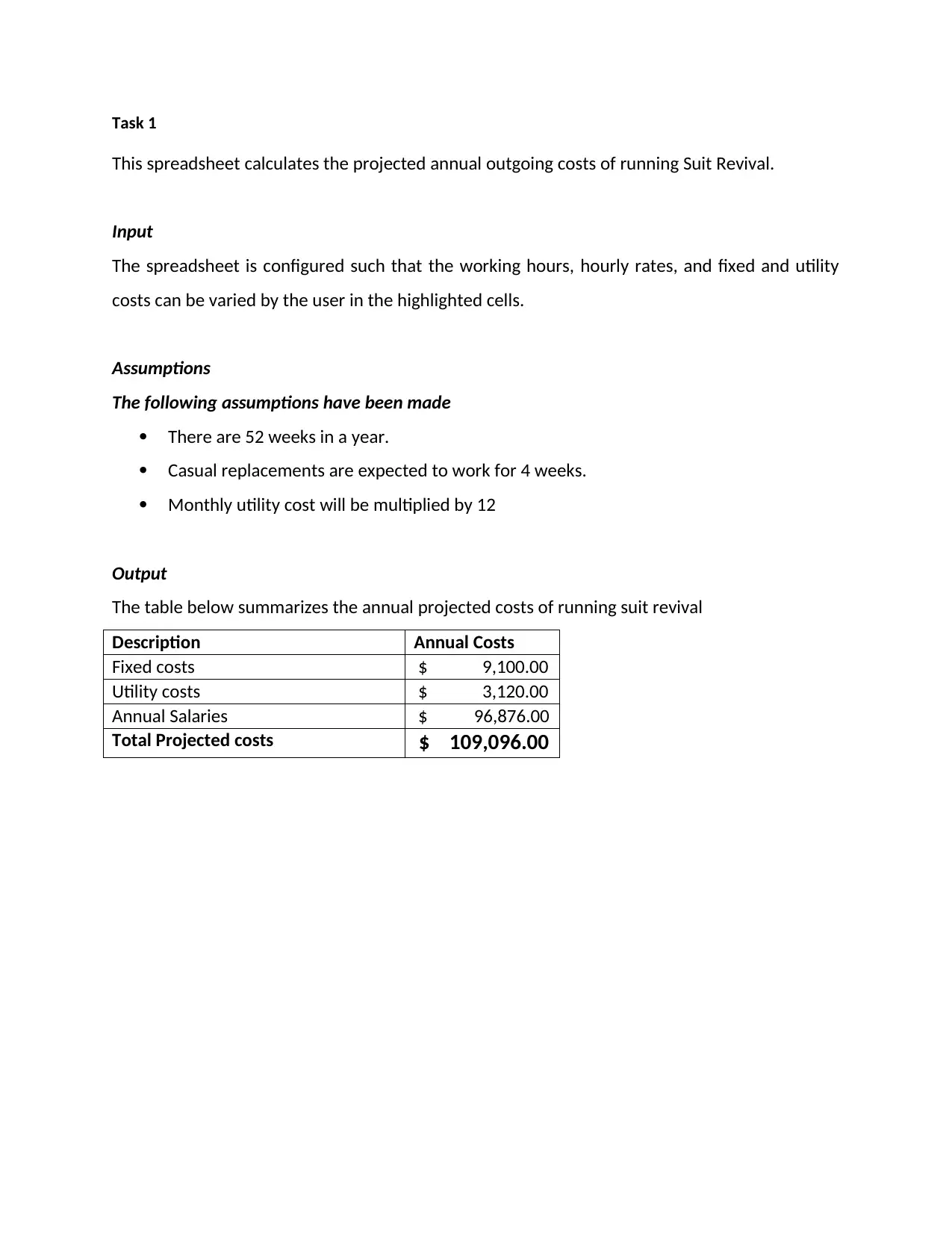
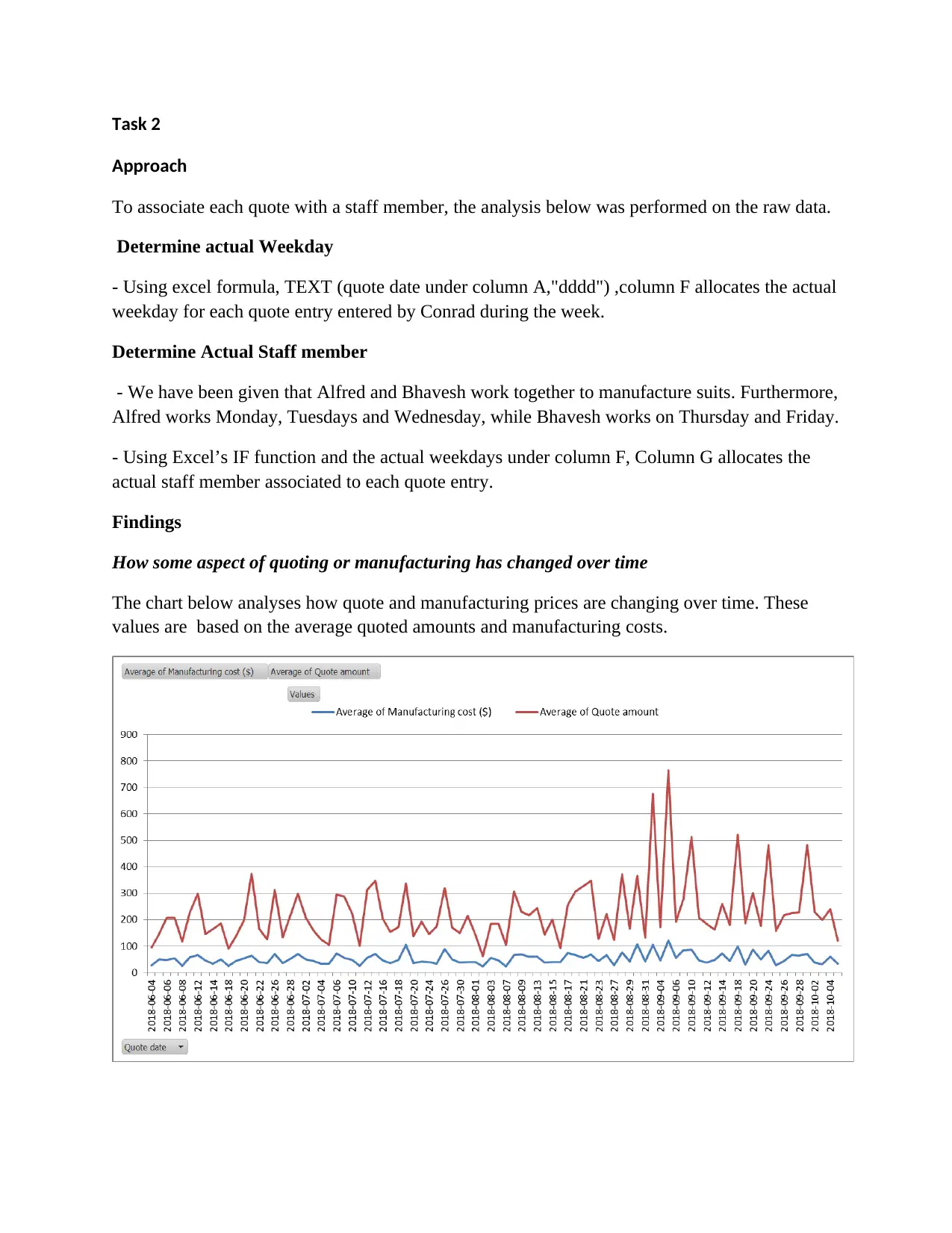
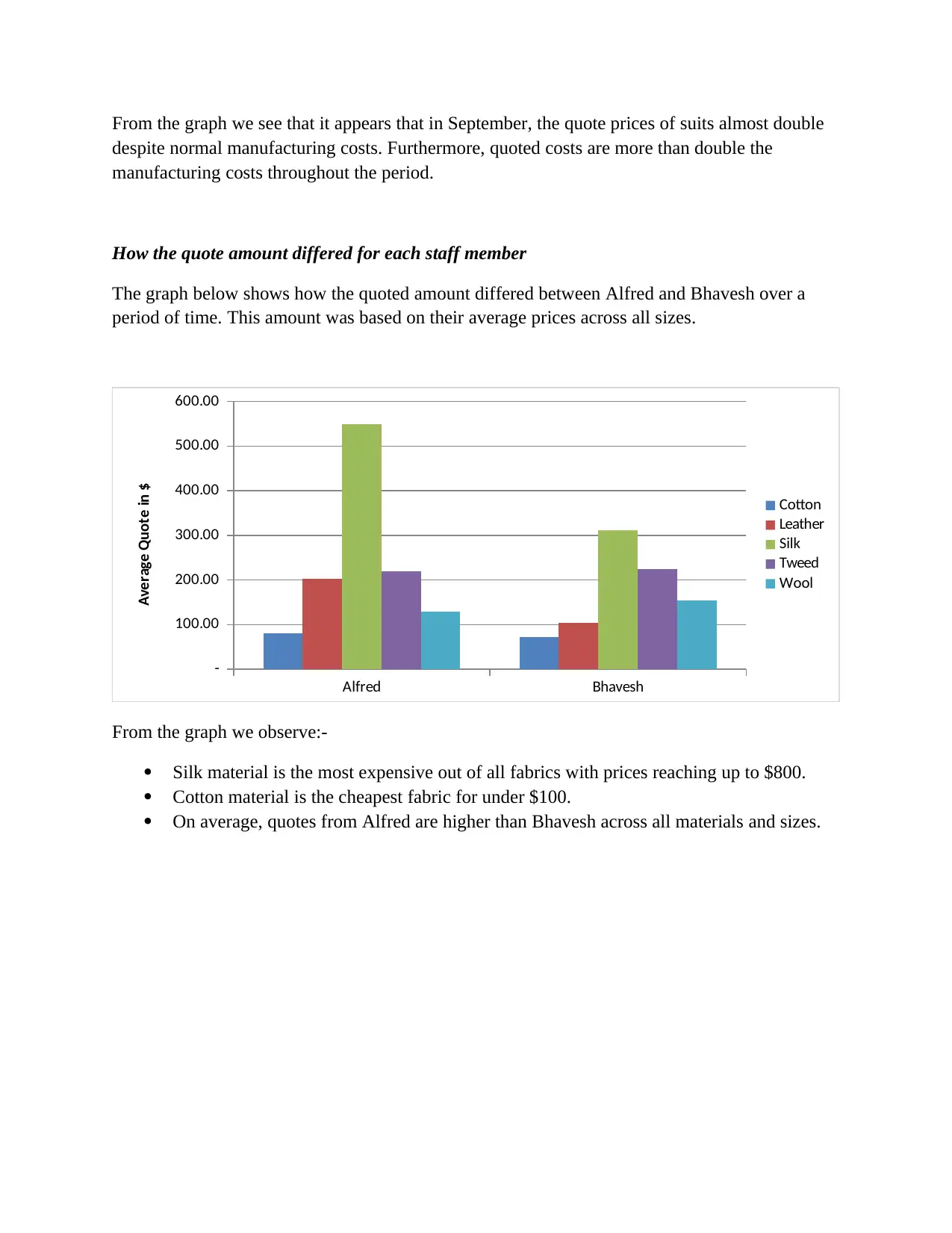

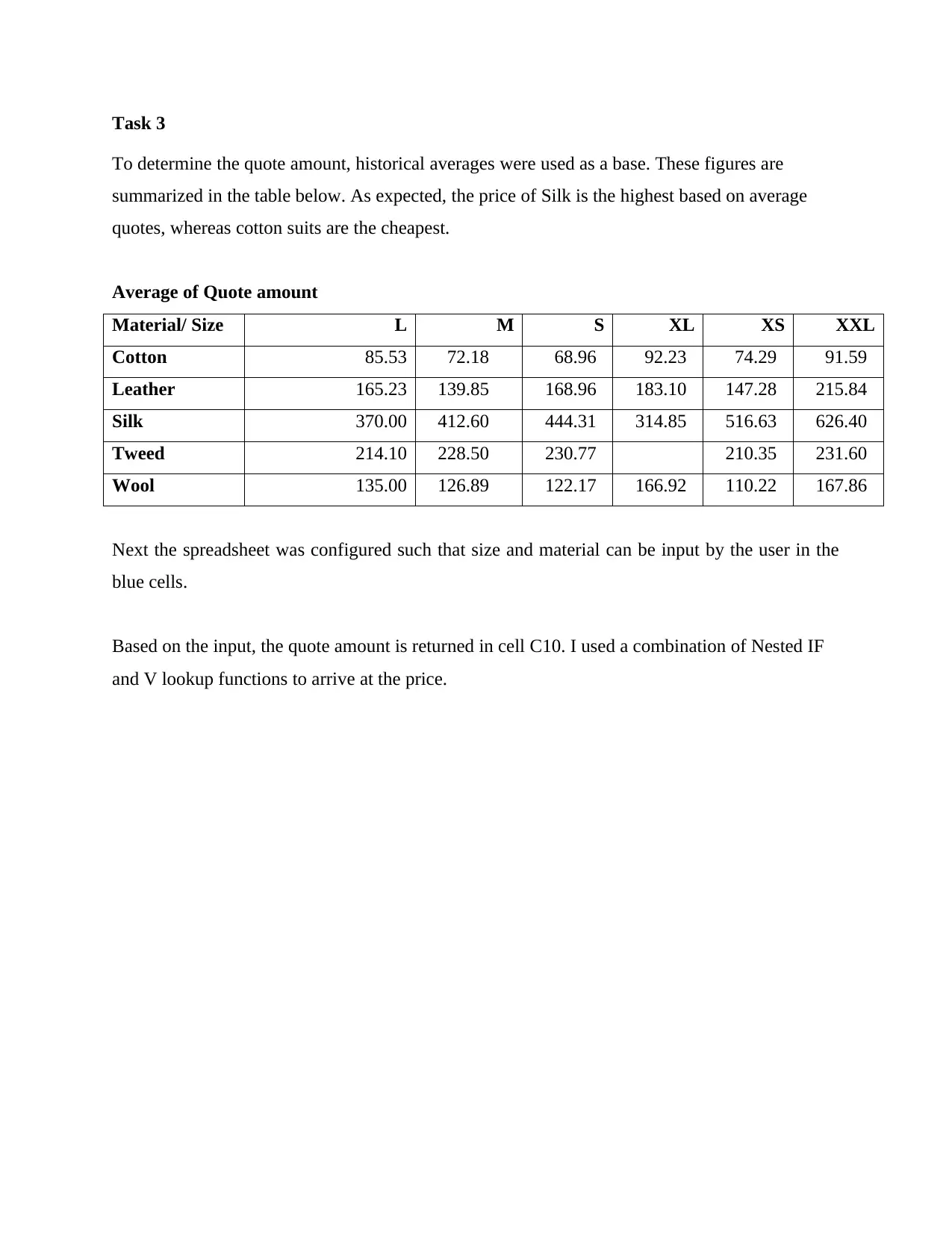
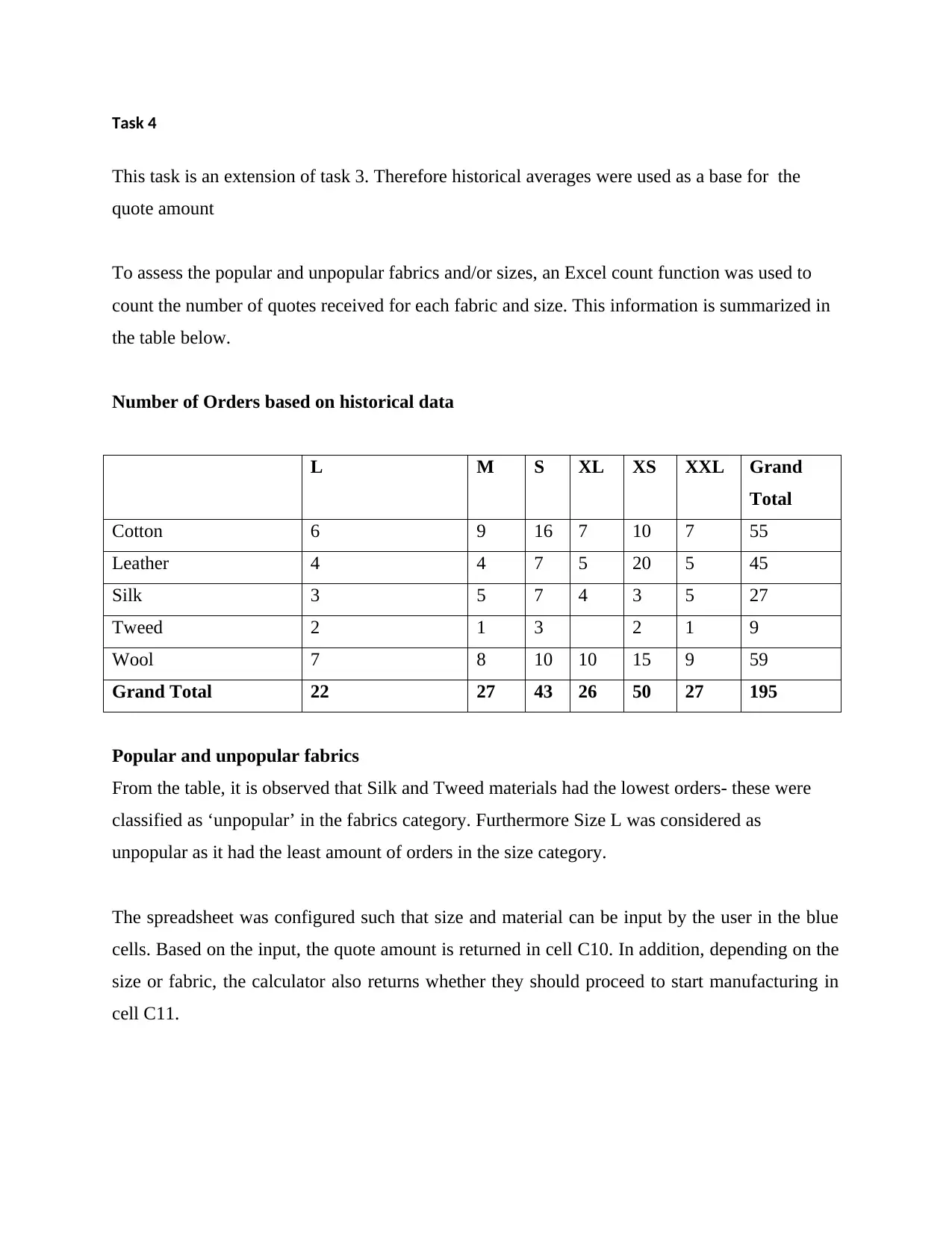





![[object Object]](/_next/static/media/star-bottom.7253800d.svg)